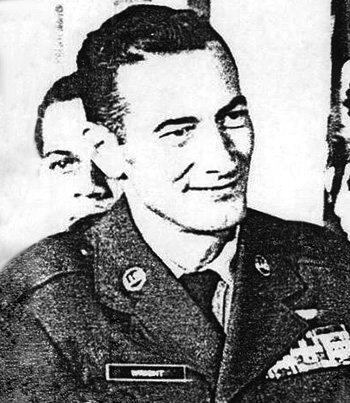
|
Leroy M. Wright |
 |
|||
| Rank, Service | ||||
Senior Master Sergeant E-8, U.S. Air Force |
||||
| Veteran of: | ||||
|
||||
| Tribute: | ||||
Leroy Wright was born on December 9, 1931, in Minneapolis, Minnesota. He enlisted in the U.S. Air Force on August 20, 1952, and was trained as an aircraft engine mechanic before serving on Okinawa from June 1953 to November 1954. Sgt Wright then served in the U.S. and later became a helicopter mechanic and crew chief, serving with the 341st Consolidated Aircraft Maintenance (CAM) Squadron at Malmstrom AFB, Montana, from October 1962 to October 1963, and with the 5010th CAM Squadron at Eielson AFB, Alaska, from October 1963 to October 1967. Sgt Wright served at Forbes AFB, Kansas, from November 1967 to June 1968, and then completed CH-3C helicopter training and survival school before deploying to Southeast Asia in December 1968. He served as a helicopter mechanic and flight engineer with the 40th Aerospace Rescue and Recovery Squadron at Nakhon Phanom Royal Thai AFB, Thailand, from December 1968 to December 1969, followed by service as an instructor at the Aerospace Rescue and Recovery Center at Eglin AFB, Florida. During his time at Eglin, Sgt Wright volunteered for and participated in the Son Tay Raid, a clandestine mission to free American Prisoners of War in North Vietnam, on November 21, 1970. SMSgt Wright's final assignment was at Minot AFB, North Dakota, where he retired from the Air Force on June 1, 1976. Leroy Wright died on November 4, 2001, and was buried at the Minnesota State Veterans Cemetery in Little Falls, Minnesota. |
||||
|
||||

